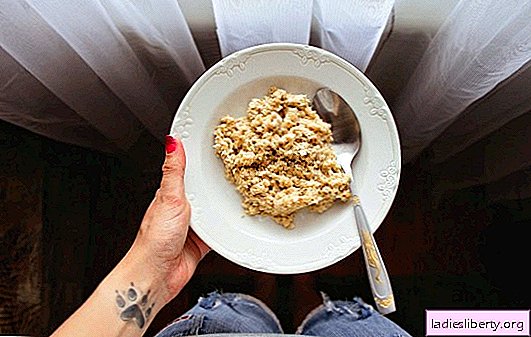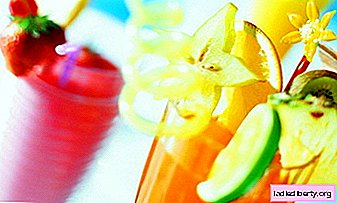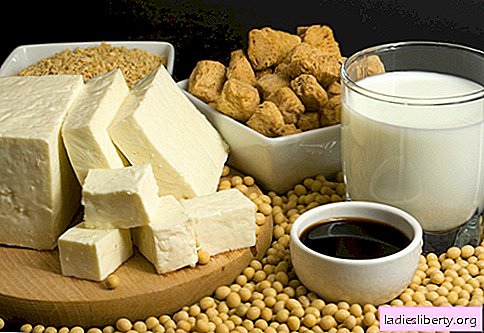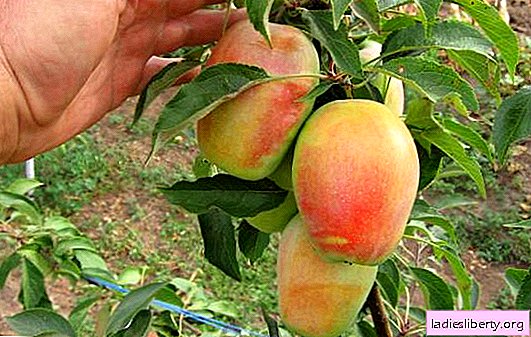
Historians and archaeologists report that the first cheese was found in the Cheops pyramid. The earlier appearance of cheese, about seven thousand years ago, refers to the modern territory of the Middle East and it is indicated that cheese appeared by chance when an Arab, a merchant and a traveler, took with him a leather vessel with milk, which was sour under the rays of the scorching sun of the desert. The traveler had no choice but to eat what came out of milk, since he had no other food. He liked the new product.
In fact, and most likely, by chance, the natural discovery of cheese dates back to the time when humans first tamed mammals, and tried a new product, which then improved for thousands of years, improving the technology of cheese making.
Today cheese making is a significant part of export income in forty countries of the world. Cheese is produced in almost all countries of the world, and not only on an industrial basis. In some regions, homemade cheese on the table is traditional food. Homemade cheese recipes are different. It is made from the milk of cows, sheep, goats, camels and buffalo. According to the method of preparation, there are brine, soft, hard and processed (or processed) cheeses.
How to cook cheese: check the quality of milk
Home-made cheese is the prerogative of rural residents who have animals on the farm that produce milk suitable for making cheese. For residents of megacities, home-made cheese production is rather a hobby, a desire to try a natural home-made product, since real home-made cheese can only be made from natural whole non-skim milk, which, alas, is a rarity in supermarkets. The only way out is to buy milk from farmers in the market to enjoy a natural homemade product.
In our latitudes, farmers can buy cow or goat milk. You can also make homemade cheese from the latter, but the choice of farm cow or goat milk must be handled competently to get cheese according to the selected recipe and technology.
Criteria to consider when choosing milk for home-made cheese:
Sanitary standards
As for the freshness of milk, cheese can also be made from yogurt. In any case, the difference between yogurt and milk is not reflected in the quality of brine and whey cheeses. There is no need to say that when buying home-made milk you need to be careful not to take it where there are no sanitary control services.
But, if you buy homemade milk from an unfamiliar seller, do not hesitate to try it. Especially if milk is goat. It can have an unpleasant odor associated with animal welfare and hormonal processes. The characteristic odor is not removed even after heat treatment and good cheese will not work.
Fat
The quality of cheeses and the choice of recipe depend on it. For example, to prepare Parmesan, you need to use the same proportions of milk in the evening and morning milk yield of cow's milk, which has not the same fat content. Fatter milk is evening. The fat content of milk also depends on the breed of the animal, feed, season and some other factors. Cheeses like Philadelphia require the use of fat milk itself, and for cheeses like Ricotta, on the contrary, the fat content in whey should be low.
The fat content of milk can be visually determined, as well as the time of milk yield. Arriving at the market in the morning, choose milk in three-liter glass bottles. In a bottle with evening milk that has already been settled, there are cream on the surface, which can be easily determined by the difference in color. Thick cream is creamy, and milk is whiter. In good homemade milk, fat content reaches 25-30%, that is, approximately 1/3 of a three-liter bottle should be filled with cream. In fresh milk of morning milk, the fat content is much lower and if milk has not settled (3-5 hours), then the amount of fat in it is not visually determined.
The fat content of some cheeses reaches 50% and higher. This composition is achieved by adding butter during cooking.
How to cook homemade cheese - the main technological points
Given the variety of cheeses, the methods of their manufacture, as well as the trademark secrets of cheese makers, we dwell only on the main and most general technological stages of cheese making, which are the same for all types of product.
Pasteurization.
For the preparation of cheese, milk must be pasteurized. In particular, this step cannot be skipped in the preparation of cheeses with a long ripening period. Just note: pasteurized milk purchased at the supermarket is not suitable for making cheese. Cheese cannot be made from such milk at all, because the pasteurization temperature of such milk is higher than 60-75 degrees - this is how milk is prepared for cheese. But some cheeses, nevertheless, are made from fresh unpasteurized milk ("Mozzarella"). In this regard, and if you want to cook such cheese at home, you need to more carefully choose the raw materials.
Adding starter and forming a cheese clot
Pasteurized milk is slightly cooled (up to 30-33 degrees) and rennet, lactic acid bacteria, vinegar, citric acid or other oxidizing agents are introduced, which contribute to the coagulation of milk protein and the separation of serum. The choice of additives depends on the specific recipe. When curdling casein is formed. Coagulation of milk depends on the properties of milk protein, its ability to turn into casein.
For example, goat milk, despite its high biochemical parameters, which are close in composition to human milk, has insufficient coagulability for making cheeses. In this regard, often Feta cheese, which in Greece is traditionally prepared from goat milk, is mixed with cow or sheep milk. If only goat milk is used to make cheese, then when cured, enzymes and other special additives that increase clotting are added to it.
Cheese Head Formation
After curdling, the clot is placed in prepared dishes (sieve, baskets, gauze) for further separation of serum. At this time, future cheese is pressed. It is placed under oppression, the weight of which depends on the desired consistency (density) of cheese. If hard cheese is being prepared, then the weight of the yoke must be increased gradually.
Cheese Ambassador
In addition, the taste of cheese depends on the addition of salt, the ambassador affects the further separation of whey, the formation of density (saline dehydrates the cheese mass). Salt also plays an important role in storing and ripening cheese.
Maturation
Externally, when ripening, the cheese changes color, humidity, characteristic holes for one or another kind of hole appear in it, a certain taste is formed. At an invisible eye biochemical level, a further change in milk proteins occurs. Lactic acid bacteria continue to participate in this process. They, like all living organisms, need to create certain conditions.
For the manufacture of hard cheeses, repeated heat treatment is used, with the addition of additional ingredients to the curd grain. For each cheese, the requirements for curd grain (moisture, size) are different.
Important: To prepare cheese in the home kitchen, of all the tools used in the production, perhaps you need to purchase thermometers to monitor the temperature of the cheese during cooking and for the room in which the process of further ripening will take place.
Recipe 1. How to cook whey cheese "Ricotta"
Composition:
Fresh whey 8 l
Fruit vinegar (6%) 100 ml
Cooking:
Preheat the whey to 90 degrees, pour in the vinegar and stir in a pan until a clot forms, which should rise to the surface. Turn off the heat and wait for the serum to cool to 30-35 degrees. Pour the contents of the pan into a sieve. After 6-8 hours, transfer the cheese to a container.
Recipe 2. How to cook homemade pickle cheese "Feta"
Composition:
Milk, goat and cow 5 l
Acidophilic bacteria 20 g
Rennet 10 g
Calcium Chloride (10% solution)
Cooking:
Preheat the milk to 30 degrees. This temperature must be maintained for an hour. Add acidophilus, calcium chloride and rennet. Once a clot forms, transfer it to a sieve mounted on a pallet. After 10-12 hours, cut the clot into cubes 1.0-1.5 cm and put them in the prepared brine. From brine, the cheese must be transferred to a sealed container with a lid after 10 hours. Keep refrigerated.
For brine: 50-60 g of salt (ordinary kitchen) per liter of boiled water.
Recipe 3. How to cook cream cheese
Products:
Fresh, pasteurized cottage cheese (18%) 0.5 kg
Butter 150 g
Egg yolk 3 pcs.
Whole milk 200 ml
Salt
Cooking:
The whole process of cooking cheese until the formation of the head should occur in a water bath with a temperature of water heating up to 70 degrees. Place a smaller container (2.5-3 L) in a large pot of water. In a smaller saucepan, heat the salted milk to taste and put the cottage cheese after wiping it with softened butter through a fine metal sieve. Stir the cottage cheese in milk with a whisk until coagulation begins. Remove the pan with the resulting clot. Drive the yolks into the hot mass, one at a time, whipping with a mixer. Place the cheese again in the steam bath for 20-30 minutes, but don’t mix it yet, just turn it over. Put the hot cheese into the mold until it cools completely.
How to cook cheese - useful tips and tricks
- Add to the dough the whey remaining after making the cheese, instead of water, and get the double benefit from it.
- Okrosha lovers can use it instead of kvass: a new taste with additional beneficial benefits. Serum okroshka can be eaten even by children.
- Popular and beloved by many, the Italian Ricotta cheese is made from fresh and warm whey, immediately after making another type of cheese.
Are the financial costs justified for home-made cheese? From one liter of milk, the output is 50 - 100 g of the finished product (depending on the type of cheese). Given the cost of a liter of milk and a kilogram of the finished product comes out a little expensive. But whey, the main product of processing, is not waste, but a completely useful product that every housewife will find use in the kitchen.











